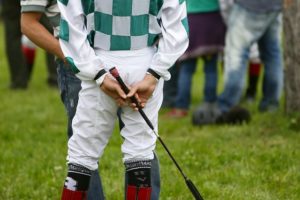What are some of the best horses ever?
 Every generation of racehorses produces it own outstanding performers but, from time to time, horses capture the public imagination in a way that transcends generations and achieve almost legendary status. Arkle, for example, is best remembered for winning the Cheltenham Gold Cup three years running in 1964, 1965 and 1966, but has since become the benchmark against which every steeplechaser is measured. Likewise, in the sphere of National Hunt racing, Red Rum, who won the Grand National in 1973, 1974 and 1977, as well as finishing second in 1975 and 1976, has also gained ‘immortality’.
Every generation of racehorses produces it own outstanding performers but, from time to time, horses capture the public imagination in a way that transcends generations and achieve almost legendary status. Arkle, for example, is best remembered for winning the Cheltenham Gold Cup three years running in 1964, 1965 and 1966, but has since become the benchmark against which every steeplechaser is measured. Likewise, in the sphere of National Hunt racing, Red Rum, who won the Grand National in 1973, 1974 and 1977, as well as finishing second in 1975 and 1976, has also gained ‘immortality’.
On the Flat, Dancing Brave, who won the 2,000 Guineas, Coral-Eclipse, King George VI and Queen Elizabeth Stakes and the Prix de l’Arc de Triomphe in 1986 – and should have won the Derby, in the eyes of many observers – falls into the same category. So, too, does Frankel, who was unbeaten in all 14 races, including ten at the highest, Group One level and was the first horse for 60 years to be a champion at two, three and four years. On the other side of the Atlantic, Secretariat, nicknamed ‘Big Red’, became the first horse in 25 years to win the Triple Crown in 1973; his 31-length demolition of the opposition in the Belmont Stakes remains one of the best performances ever seen on a racecourse.
 Obviously there are exceptions, notably Lester Piggott, at 5’8″, and Richard Hughes and Sir Anthony McCoy, both at 5’10”, but most male jockeys are well below average height. Typically, jockeys riding on the Flat stand between 4’10” and 5’6″ tall; taller jockeys, such as Piggott and Hughes, must make significant sacrifices to maintain their weight below its natural level, sometimes for years on end. Although in Britain the minimum riding weight for National Hunt jockeys is 10st 0lb, as opposed to 8st 0lb for Flat jockeys, eighteen months after his retirement Sir Anthony McCoy freely admitted to having put on two stone in the interim.
Obviously there are exceptions, notably Lester Piggott, at 5’8″, and Richard Hughes and Sir Anthony McCoy, both at 5’10”, but most male jockeys are well below average height. Typically, jockeys riding on the Flat stand between 4’10” and 5’6″ tall; taller jockeys, such as Piggott and Hughes, must make significant sacrifices to maintain their weight below its natural level, sometimes for years on end. Although in Britain the minimum riding weight for National Hunt jockeys is 10st 0lb, as opposed to 8st 0lb for Flat jockeys, eighteen months after his retirement Sir Anthony McCoy freely admitted to having put on two stone in the interim.